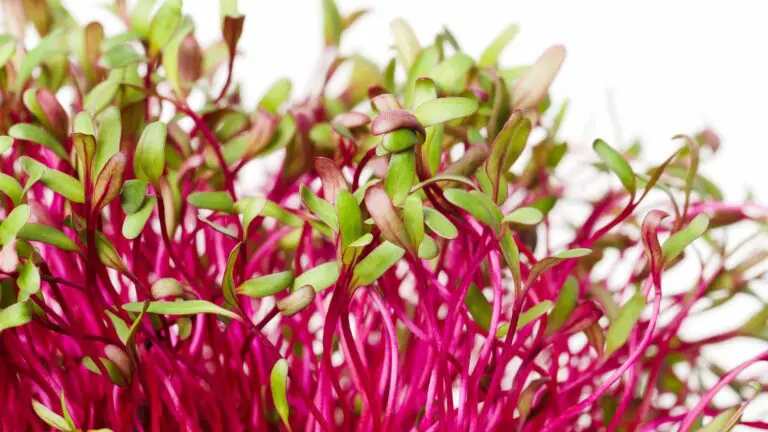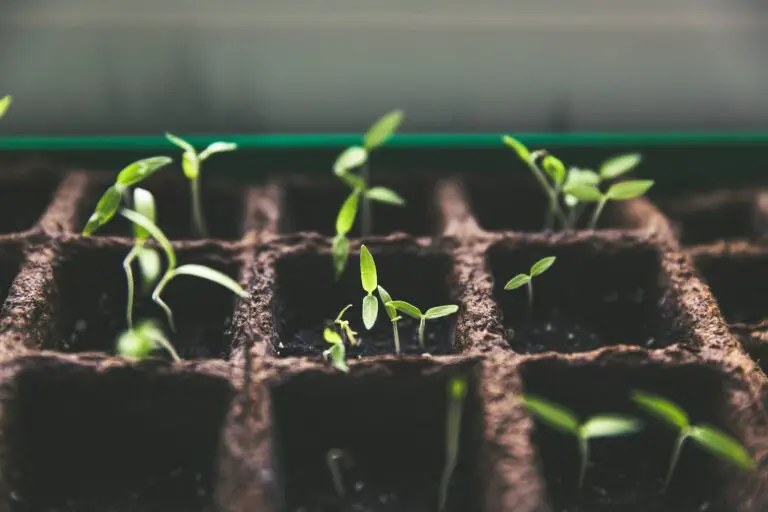How to Grow Hydroponic Tomatoes for the Absolute Beginner?
Disclosure: Your purchases through our links may earn us a small commission, supporting our site’s ability to provide valuable information to our readers. Rest assured, it won’t impact your price. Thank you for your support.
Tomatoes are a popular garden crop because they are relatively easy to grow, and there is a wide variety of types available.
Hydroponic tomatoes can be grown in a greenhouse or indoors all year long, making them a great option for those who live in colder climates.
This blog post will discuss the basics of growing hydroponic tomatoes from choosing the right type of tomato to setting up your hydroponic system!
Why Are Hydroponic Tomatoes Needed?
With hydroponic technology, nutrient-rich water is directly delivered to the roots of the plants, which is why they are needed for indoor gardening. When grown in soil, tomatoes tend to absorb many minerals from the earth, making them less than desirable for eating.
On the other hand, hydroponic tomatoes are grown in a sterile environment and are not exposed to any pests or diseases. This results in a far tastier and healthier product!
What Are the Health Benefits of Tomatoes?
1 . Tomatoes are a great source of Vitamin A, Vitamin C, and lycopene.
- Vitamin A is important for healthy vision
- Vitamin C helps keep our immune system strong
- Lycopene is a powerful antioxidant that can help protect against cancer.
2 . They also contain potassium and folate. All of these nutrients are essential for good health!
- Potassium is necessary for proper muscle function.
- Folate is essential for pregnant women as it helps prevent congenital disabilities.
What Are the Benefits of Growing Tomatoes Hydroponically?
There are many benefits to growing hydroponic tomatoes.
- One of the most significant advantages is controlling the entire growing process from start to finish.
- You don’t need to worry about the climate you are living in. All you need is a space that has enough light and can be temperature-controlled, and access to nutrient-rich water!
- By growing tomatoes hydroponically, you can ensure that they are free of pesticides and other harmful chemicals.
- Additionally, hydroponic tomatoes tend to have a higher nutrient content than those grown in soil. This is because the plant’s roots are directly exposed to nutrient-rich water, which allows them to absorb more minerals and vitamins.
- Another great benefit is the increased yield. Hydroponic tomatoes can produce up to 30% to 50% more fruit than their soil-grown counterparts!
- Hydroponic tomatoes have a longer shelf life.
Choosing the Right Type of Tomatoes to Grow
When choosing hydroponic tomatoes, it is crucial to select a variety that is well suited to your climate and growing conditions. Additionally, it is vital to choose a tomato that is disease resistant and has a high yield.
There are many different hydroponic tomatoes available, such as Cherry, Beefsteak, Cluster/Tuss, and Cocktail Tomatoes. So do some research to find one that will work best for you.
What Is the Good Medium for Seedling and Germination of Hydroponic Tomatoes?
There are many different hydroponic mediums that you can use to grow tomatoes. The most common include:
- Coco Coir: A renewable growing medium made from coconut husks. It is an excellent option for those looking for a sustainable option. Additionally, it is known for being resistant to pests and diseases.
- Perlite: A lightweight, volcanic rock that is often used in horticulture. It is an excellent drainage medium and can help keep the roots of your plants healthy.
- Vermiculite: Another type of volcanic rock that is similar to perlite. It is known for its water retention properties and can help to prevent your plants from becoming too dry.
- Rockwool: An artificial medium made from melted rocks. It is known for being very stable and easy to work with. Additionally, it can help to increase the yield of your plants.
No matter which type of medium you choose, it is important to ensure that it is sterile and free of pests and diseases. The last thing you want is for your hydroponic tomatoes to become infected!
How to Set Up Your Hydroponic Tomato System?
Now that you have chosen the right type of tomatoes and medium, it is time to set up your hydroponic system!
There are different types of hydroponic systems, but the most common include:
- Deep Water Culture (DWC): A system where the roots of the plants are submerged in a nutrient-rich solution.
- Nutrient Film Technique (NFT): A method where the roots of the plants are exposed to a thin film of nutrients.
- Aeroponics: A system where the roots of the plants are misted with a nutrient-rich solution.
Each type of system has its own set of benefits and drawbacks, so it is important to choose the right one for you, considering the location, resources available, and the budget.
Related:
How to Set Up a Deep Water Culture (DWC) Hydroponic System?
How to Set Up a Nutrient Film Technique – NFT Hydroponics?
8 Easy Steps to Setup Wick Hydroponics System
Once you have chosen a system, it is time to set it up!
Here are some tips to help you get started:
- Choose a location that has enough light and can be temperature-controlled.
- Assemble your hydroponic system.
- Fill the reservoir with nutrient-rich water and test the pH level to ensure it is between five and six.
- Plant your tomatoes in the chosen medium and place them in the system.
- Monitor the system closely and keep the roots of the plants submerged in the nutrient solution.
With these tips, you should be well on your way to growing healthy and delicious hydroponic tomatoes!
What Are the Different Stages of Tomato Plant Development?
Like any other plant, tomatoes go through four different stages of development. These stages include:
- Germination is the first stage of growth and occurs when the seeds sprout and begin to grow.
- The vegetative stage is the second stage of growth and occurs when the plant begins to grow leaves and stems.
- Flowering is the third stage of growth and occurs when the plant begins to produce flowers.
- Fruiting is the fourth stage of growth and occurs when the plant begins to produce fruit.
Each growth stage requires different care and attention, so it is important to be aware of what your plant needs at each stage.

- It is important to keep the seeds warm and moist during the germination stage.
- It is important to provide the plant with plenty of light and nutrients during the vegetative stage.
- During the flowering and fruiting stages, it is important to ensure the plant has enough water and support.
By understanding the different stages of tomato plant development, you can ensure that your plants are getting the care and attention they need to thrive!
Related:
4 Internal Factors Affecting Germination in Rockwool for Hydroponics
How to Increase the Germination Rate in Rockwool
Maintaining Your Hydroponic Tomatoes Growing
Once your hydroponic system is up and running, it is important to maintain it properly to ensure a healthy crop of tomatoes. Below is an important checklist.
1 . The pH level of water
One of the most important aspects of maintenance is monitoring the pH level of the water. The ideal pH level for hydroponic tomatoes is between 5.5-6.5. If the pH level drops below the range, the plants will not be able to absorb the nutrients properly.
The best method to verify pH is to use a digital pH meter. These may be found online or at your local hydroponic store. If you want a pH meter, you may click this link as it has been reviewed as the finest of the best by Amazon.
Do you want to learn the difference between pH test strip vs digital pH meter? Read our post to know more.
2 . Temperature of the Water
Additionally, it is essential to keep an eye on the temperature of the water. The ideal temperature for hydroponic tomatoes is between 70 and 80 degrees Fahrenheit.
3 . Nutrient levels in the water
It is important to make sure that the nutrient levels are adequate because if they are too low, the plants will not be able to grow properly.
If the nutrient levels are too high, it can cause problems with the roots of the plants. The best way to monitor the nutrient levels is to use a chemical test kit.
An adequately mixed solution’s PPM (Parts Per Million) of a nutrient should be between 1400-3500. The EC (electrical conductivity) should also be 2.0-5.0.
On the other hand, farmers use basic handheld meters to measure TDS (Totally Dissolved Solids) or EC (Electrical Conductivity). You can use an EC meter or a TDS meter. If you want to purchase a TDS meter, you may check out this link since it is ranked as the best of the best by Amazon Or you can buy a meter that has all three meters in one to measure TDS, EC, and temperature.
Related:
NPK for Hydroponics: How It Works and Why It Matters
What EC Means for Hydroponics
4 . Light
Tomatoes need at least eight hours of sunlight per day. If they do not get enough light, they will not be able to produce fruit properly.
One way to ensure that your plants get enough light is to use a grow light.
5 . Pests and diseases free
Last but not least, it is important to regularly check the plants for pests and diseases. If you see any signs of pests or diseases, it is important to treat them immediately.
By following these simple maintenance tips, you can ensure a healthy crop of hydroponic tomatoes!
When to Harvest Your Hydroponic Tomatoes?
The best time to harvest your hydroponic tomatoes will depend on the variety you are growing. However, most hydroponic tomatoes will be ready to harvest within four to six weeks of planting.
Once the tomatoes are ripe, they can be picked by hand or a tomato knife. Be sure to handle the fruits gently, as they are delicate and can easily be bruised.
By following these simple tips, you can ensure that your hydroponic tomatoes will be healthy and delicious! So what are you waiting for? Get grow hydroponic tomatoes today and enjoy the crops!
Thank you for reading.
Also, read:
Pros and Cons of Drip Hydroponic System
How to Set Up a Hydroponic Drip System




